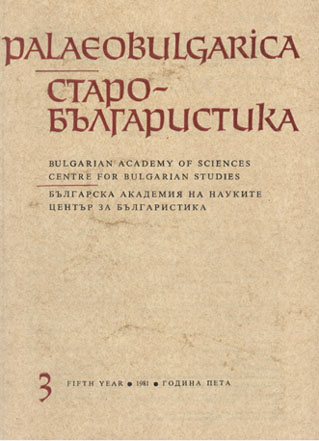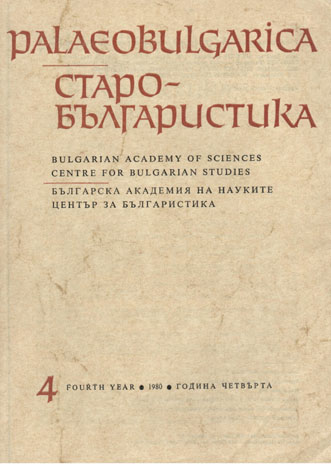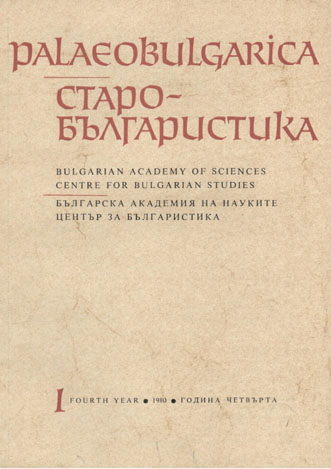
We kindly inform you that, as long as the subject affiliation of our 300.000+ articles is in progress, you might get unsufficient or no results on your third level or second level search. In this case, please broaden your search criteria.














This paper represents a long-needed criticism of Miller (2005) which carried over the famous discussion of Turkic böz ‘fabric’ in the micro-‘Altaic’ context even further East to Japan and Korea. I demonstrate that Miller’s arguments fail on historical linguistics and philological grounds for all five putative ‘Altaic’ families due in large extent to the faulty nature of either his argumentation or data, or both.
More...
Three leaves written in Brāhmī script and kept in the Dunhuang Research Academy turn out to be parts of a bilingual text of Dharmaśarīrasūtra in Sanskrit and Uighur. After analysing several versions of Dharmaśarīrasūtra, it can be inferred that these three fragments belong to the Northern Brāhmī recensions which were circulated along the Northern Silk Road and are different from the Southern Brāhmī recensions popular along the Southern Route, such as the Khotanese version. This paper attempts to transcribe these fragments and make a thorough research on Dharmaśarīrasūtra, taking five relevant Chinese versions into account.
More...
This paper presents results of a primary investigation of an Old Uyghur text written on a wooden plate discovered in the fourth layer of the cave NK 9 in the Tuyoq Grottoes in Turfan during the excavations carried out by a joint team of Chinese archaeologists between the autumn of 2010 and early summer of 2011. The text on Side A of the wooden plate is from the Old Uyghur translation of the Viśeṣa-cinti-brahma-paripṛcchā ‘Scripture of the inquiry of the Deity of Thinking’ and closely matches the Siyi fantian suowen jing 思益梵天所問經, translated into Chinese by Kumārajīva. The text on Side B of the wooden plate is also of Buddhist content and seems to be by the same scribe. Presumably, it is also from the Old Uyghur translation of the Viśeṣa-cinti-brahma-paripṛcchā, but it still needs a definite identification.
More...
Although it has been traditionally accepted that quebi 缺筆, one of the name taboo (bihui 避諱) methods, appeared in Tang Gaozong’s reign (649 – 683), a number of unexamined examples attest that quebi may have appeared in Tang Taizong’s reign (626 – 649). This advancement enhances the usage of bihui to conduct research and urges us to rethink the 7th-century development of bihui.
More...
The Bāṇāsurakathā is a sharada manuscript in Old Kashmiri composed by Avtar Bhatt, dated between the 14th and 16th centuries. It retells the love story of the demon Bāṇa’s daughter Uṣā with Krishna’s grandson Aniruddha, and the ensuing fight between Bāṇa and Krishna, as it is found in the Harivaṃśapurāṇa. This paper focuses on the linguistic features of the Old Kashmiri language in which this manuscript is composed. Old Kashmiri belongs to the Early New Indo-Aryan language stage, a stage crucial for a number of syntactic developments which determined the Indo-Aryan languages of today. First, the language found in the Bāṇāsurakathā is situated among the attestations of Old Kashmiri found in other manuscripts. The language is younger than that of the Mahānaya-Prakāśa, but older than the language used in the Lallā-Vākyāni. Second, a number of linguistic features of Old Kashmiri are presented, such as the case marking and the verb agreement. Third, the paper focuses on the phenomenon of pronominal suffixation, well known in Modern Kashmiri, but not present in Apabhraṃśa. It is shown that the first traces of pronominal suffixation already existed in the Bāṇāsurakathā, but their use was not yet grammatically fixed.
More...
KLAUS MYLIUS: Māhārāṣṭrī. Grammatischer Abriss und Wörterbuch. Wiesbaden, Harrassowitz Verlag, 2016 (Beiträge zur Kenntnis südasiatischer Sprachen und Literaturen, 25) 131 pp. ISBN 978-3-447-106643-6 ANASTASIIA ZHERDIEVA: Крымские легенды как часть мировой культуры [Crimean legends as a part of world culture]. Simferopol’, Tavrida, 2017. 248 pp. ISBN 978-5-9500280-7-6
More...